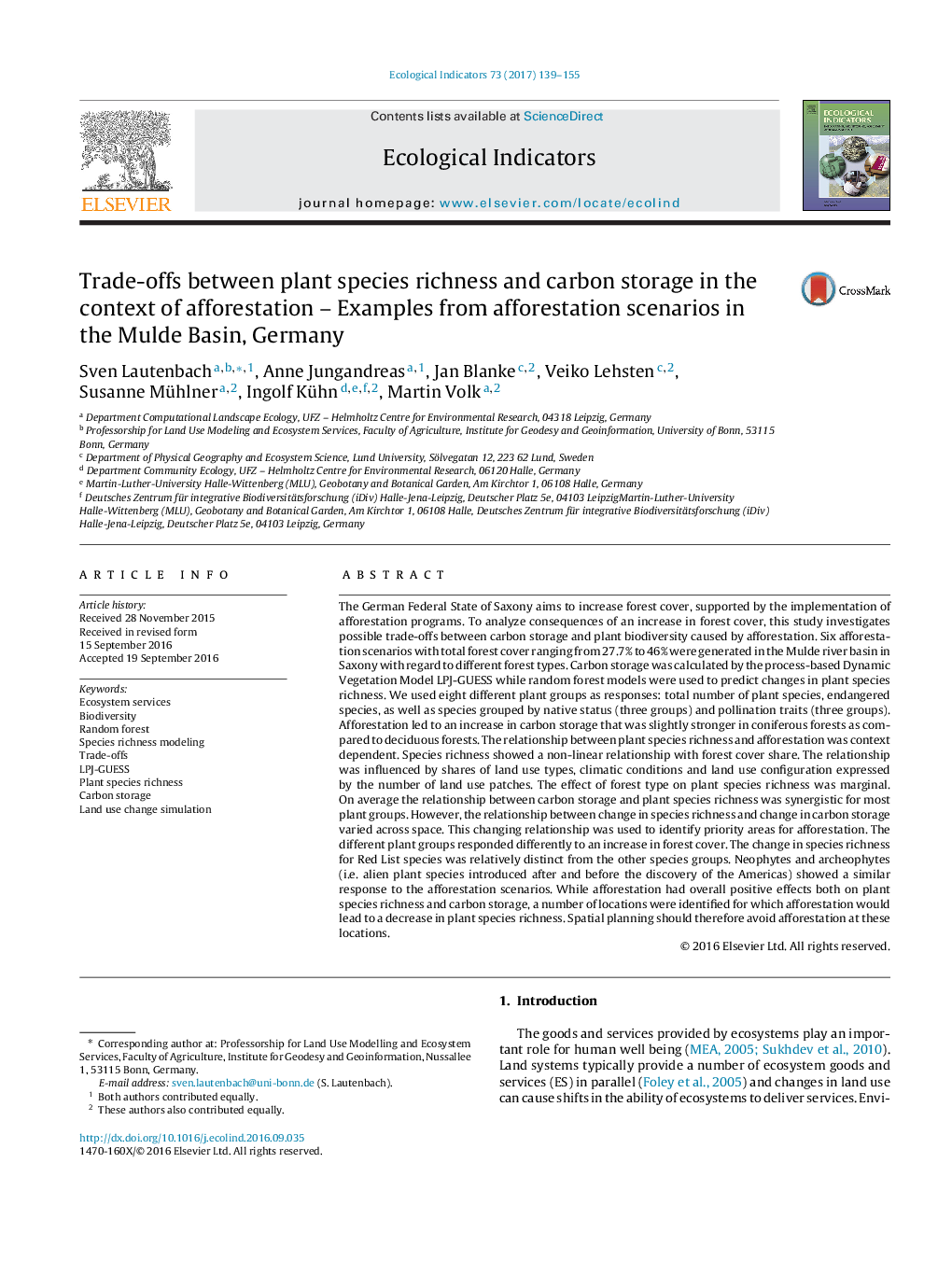| کد مقاله | کد نشریه | سال انتشار | مقاله انگلیسی | نسخه تمام متن |
|---|---|---|---|---|
| 6292544 | 1617129 | 2017 | 17 صفحه PDF | دانلود رایگان |
عنوان انگلیسی مقاله ISI
Trade-offs between plant species richness and carbon storage in the context of afforestation - Examples from afforestation scenarios in the Mulde Basin, Germany
ترجمه فارسی عنوان
مناقشات بین غنای گونه گیاهی و ذخایر کربن در زمینه جنگل زدایی - نمونه هایی از سناریوهای جنگل زدایی در حوضه مولد، آلمان
دانلود مقاله + سفارش ترجمه
دانلود مقاله ISI انگلیسی
رایگان برای ایرانیان
کلمات کلیدی
موضوعات مرتبط
علوم زیستی و بیوفناوری
علوم کشاورزی و بیولوژیک
بوم شناسی، تکامل، رفتار و سامانه شناسی
چکیده انگلیسی
The German Federal State of Saxony aims to increase forest cover, supported by the implementation of afforestation programs. To analyze consequences of an increase in forest cover, this study investigates possible trade-offs between carbon storage and plant biodiversity caused by afforestation. Six afforestation scenarios with total forest cover ranging from 27.7% to 46% were generated in the Mulde river basin in Saxony with regard to different forest types. Carbon storage was calculated by the process-based Dynamic Vegetation Model LPJ-GUESS while random forest models were used to predict changes in plant species richness. We used eight different plant groups as responses: total number of plant species, endangered species, as well as species grouped by native status (three groups) and pollination traits (three groups). Afforestation led to an increase in carbon storage that was slightly stronger in coniferous forests as compared to deciduous forests. The relationship between plant species richness and afforestation was context dependent. Species richness showed a non-linear relationship with forest cover share. The relationship was influenced by shares of land use types, climatic conditions and land use configuration expressed by the number of land use patches. The effect of forest type on plant species richness was marginal. On average the relationship between carbon storage and plant species richness was synergistic for most plant groups. However, the relationship between change in species richness and change in carbon storage varied across space. This changing relationship was used to identify priority areas for afforestation. The different plant groups responded differently to an increase in forest cover. The change in species richness for Red List species was relatively distinct from the other species groups. Neophytes and archeophytes (i.e. alien plant species introduced after and before the discovery of the Americas) showed a similar response to the afforestation scenarios. While afforestation had overall positive effects both on plant species richness and carbon storage, a number of locations were identified for which afforestation would lead to a decrease in plant species richness. Spatial planning should therefore avoid afforestation at these locations.
ناشر
Database: Elsevier - ScienceDirect (ساینس دایرکت)
Journal: Ecological Indicators - Volume 73, February 2017, Pages 139-155
Journal: Ecological Indicators - Volume 73, February 2017, Pages 139-155
نویسندگان
Sven Lautenbach, Anne Jungandreas, Jan Blanke, Veiko Lehsten, Susanne Mühlner, Ingolf Kühn, Martin Volk,
